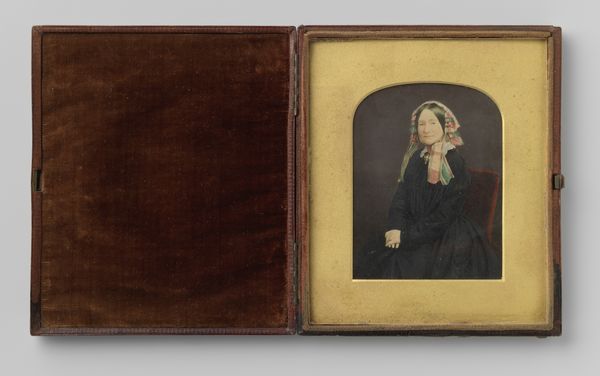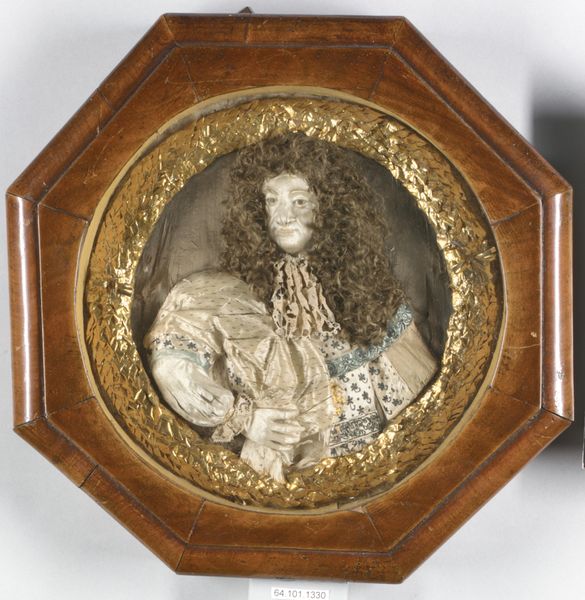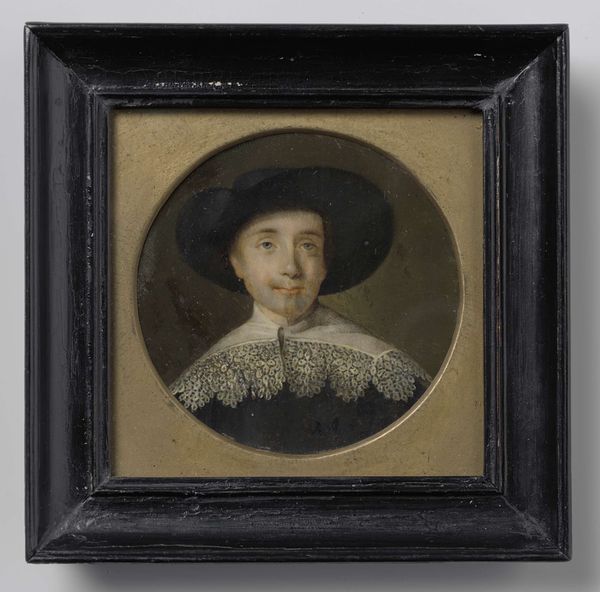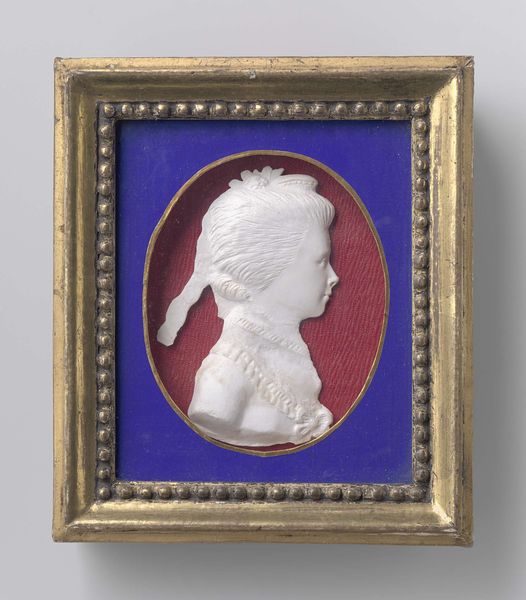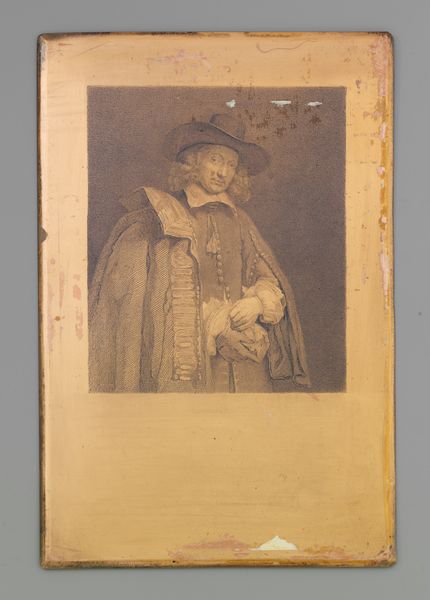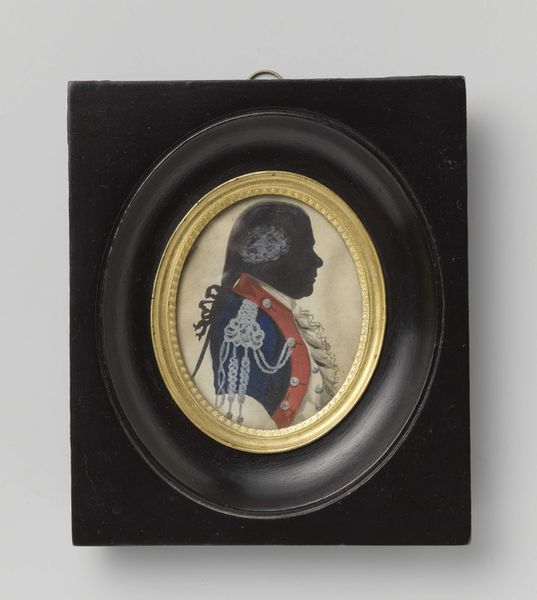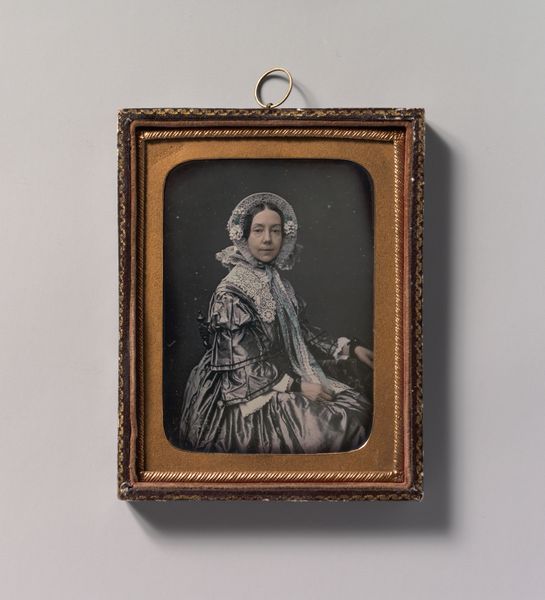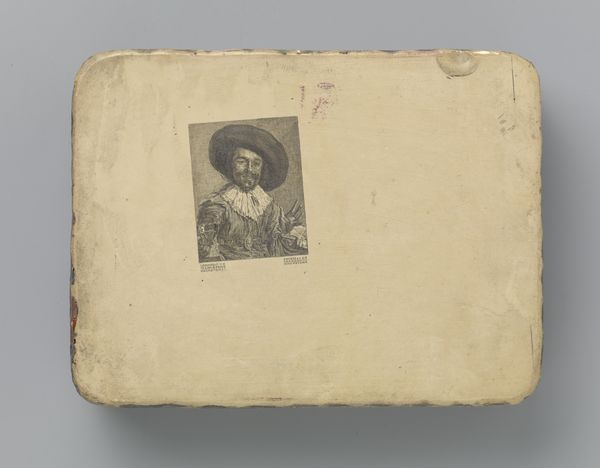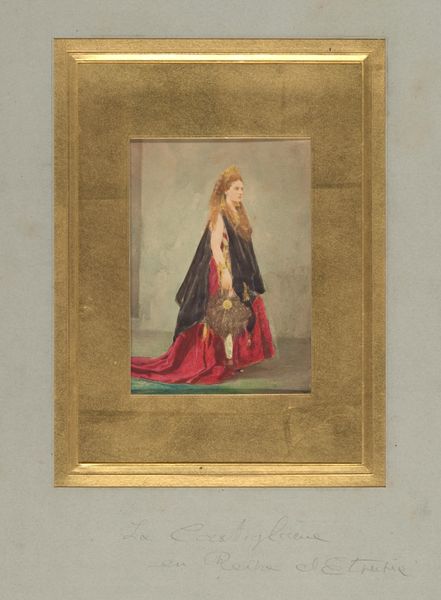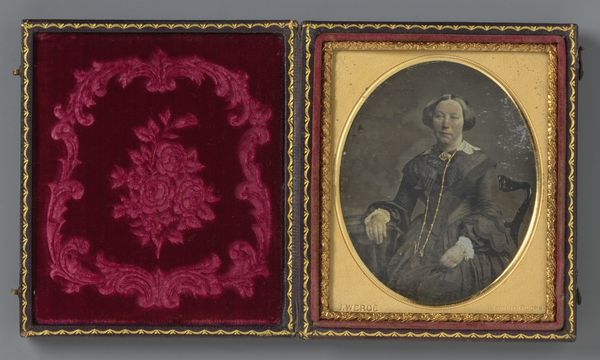
painting, textile, sculpture
#
portrait
#
baroque
#
painting
#
textile
#
sculpture
#
history-painting
#
decorative-art
#
watercolor
Dimensions: H. 7 1/4 x W. 5 3/4 (18.4 x 14.6 cm)
Copyright: Public Domain
Curator: This is a work titled "Charles I", likely created sometime between 1649 and 1699, now residing at the Metropolitan Museum of Art. It appears to combine painting and possibly textile or even sculptural elements. Editor: The first word that springs to mind is 'melancholy.' Even with the decorative arts touches, there's a definite sense of subdued regality, an introspective aura about the figure. Curator: It’s intriguing, isn’t it? Consider the turbulent historical context, post his execution in 1649. The artwork becomes more than just a portrait, but a potential statement. Perhaps a coded expression of loyalty or lament. Editor: Absolutely. I’m struck by the prominence of the oval frame within the frame, visually isolating the subject. It adds to that feeling of separation, loss, and maybe even hints at a symbolic "window" to memory or mourning. Curator: It is worth pondering how political sentiment could be circulated or manifested during periods of oppression, and the choice of textile and possibly sculptural application also invites closer analysis into how the very medium of "Charles I" engages with contemporary social and political matters, or personal stories and agendas, from a monarch who struggled to find consensus from the different factions within Parliament and English society more generally. Editor: Looking at Charles' garments, I detect some curious symbolisms as well. Is that fabric purely decorative or is there possibly a deeper heraldic or even familial coding at work within those delicate textures? These details, no matter how small, held considerable power in those eras of symbolism. Curator: That's a compelling reading. Decorative arts frequently embed specific symbolic registers tied to family or political alliances, acting as carefully chosen signs of identity. We see it time and again in similar depictions of historical figures of nobility. Editor: Thinking about it, despite everything, this object stands as a subtle monument. A tangible reminder that even in the aftermath of tumultuous events, images carry layered meaning. It makes us reconsider assumptions about legacy, identity, and remembrance. Curator: Precisely. It’s not just about remembering Charles, it is about understanding how images shaped memory and even, perhaps, sustained contested power relations. Editor: Ultimately, 'Charles I', offers a space for multiple readings. The delicate balance between what is plainly visible and deeply encoded continues to beckon us towards unlocking those silent stories that images often conceal.
Comments
No comments
Be the first to comment and join the conversation on the ultimate creative platform.
